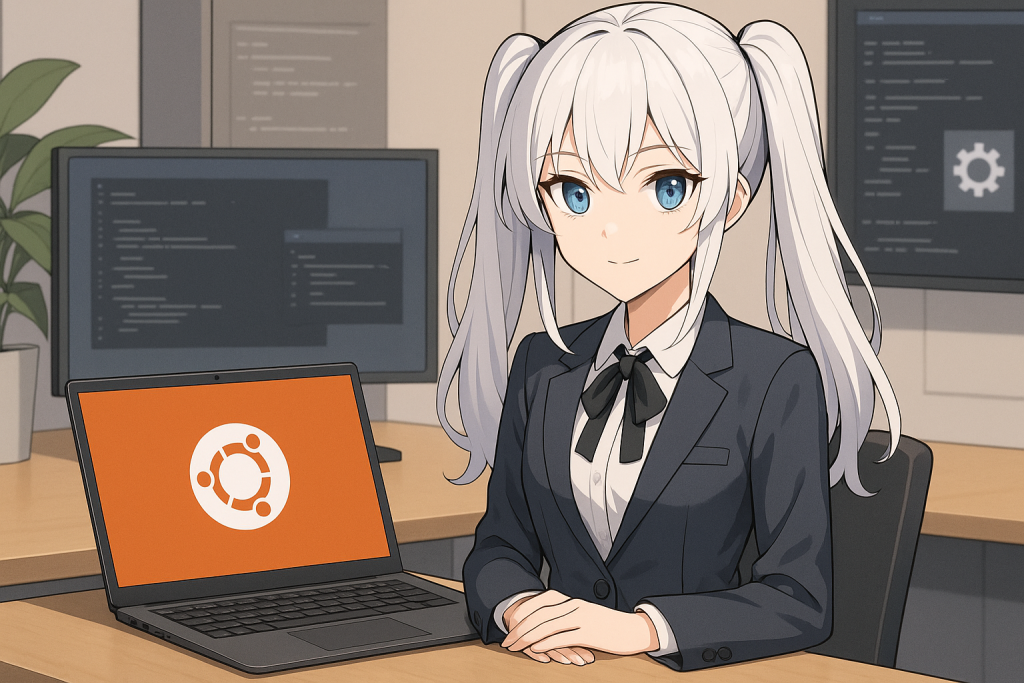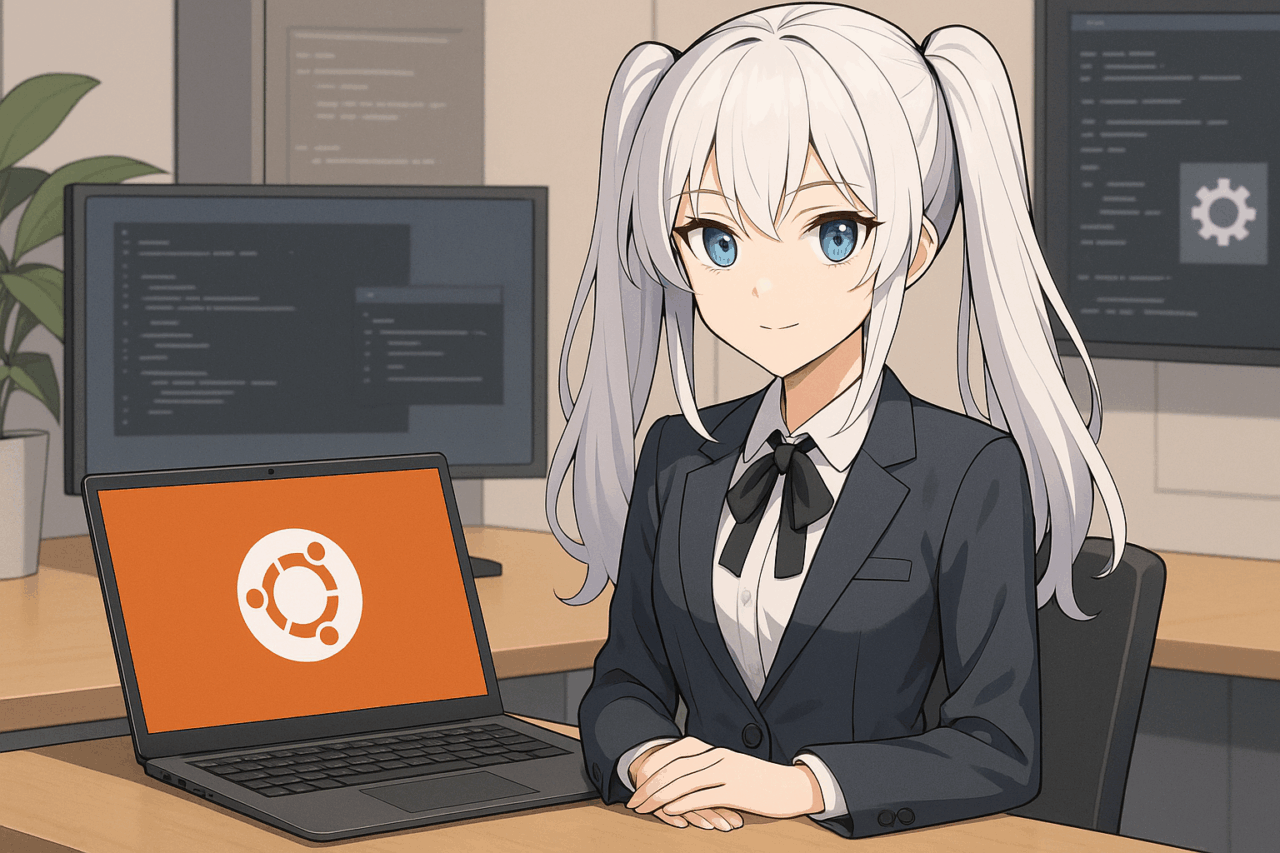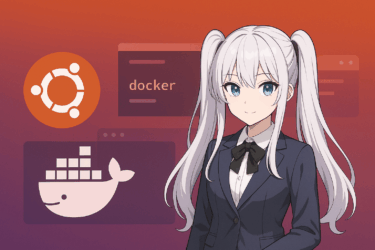- 1 1. Introduction
- 2 2. Minimum System Requirements for Ubuntu 22.04 LTS
- 3 3. Recommended Specs and Why They Matter
- 4 4. Spec Recommendations by Use Case
- 5 5. Preparing for Installation
- 6 6. Installation Steps for Ubuntu 22.04 LTS
- 6.1 6.1 Starting the Installation
- 6.2 6.2 Choosing Language and Keyboard Layout
- 6.3 6.3 Updates and Other Software
- 6.4 6.4 Choosing Installation Method
- 6.5 6.5 Partitioning Tips
- 6.6 6.6 Setting User Information and Time Zone
- 6.7 6.7 Running and Completing the Installation
- 6.8 6.8 First Boot and Login
- 6.9 6.9 Summary
- 7 7. Initial Setup and Customization
- 8 8. Frequently Asked Questions (FAQ)
- 8.1 Q1. Can Ubuntu 22.04 LTS run on an old PC?
- 8.2 Q2. Can I use Ubuntu and Windows on the same PC?
- 8.3 Q3. Where can I download the Ubuntu 22.04 LTS ISO?
- 8.4 Q4. How do I create an installation USB drive?
- 8.5 Q5. Is Ubuntu free for commercial use?
- 8.6 Q6. Japanese input isn’t working after installation. What should I do?
- 8.7 Q7. My PC won’t boot after installing Ubuntu.
- 8.8 Q8. How long will Ubuntu 22.04 LTS be supported?
- 9 9. Conclusion
1. Introduction
Ubuntu 22.04 LTS is the latest Long Term Support (LTS) version in the widely used Ubuntu Linux distribution series. LTS stands for “Long Term Support,” guaranteeing five years of updates and support. Thanks to its stability and reliability, Ubuntu 22.04 LTS is trusted by both individual users and enterprises worldwide.
When people hear “Linux,” many imagine something complicated or highly technical. However, Ubuntu 22.04 LTS stands out for its user-friendly interface and ease of use, making it popular among beginners and engineers alike.
In recent years, it has gained attention for remote work setups, development environments, and repurposing older PCs for modern use.
This article provides a detailed guide for those considering Ubuntu 22.04 LTS—whether you’re new to Linux or wondering, “Will it run smoothly on my PC?” We’ll cover recommended system specs and key points to know before installation.
You’ll also find advice on choosing hardware, preparing for installation, a step-by-step setup guide, and answers to frequently asked questions. This content is especially helpful for anyone starting with Ubuntu.
First, we’ll clarify what “LTS” means and outline the key benefits of choosing Ubuntu 22.04 LTS. Use this as a practical reference for your installation.
2. Minimum System Requirements for Ubuntu 22.04 LTS
To install Ubuntu 22.04 LTS, your PC must meet certain hardware requirements. Let’s start with an overview of the official minimum system requirements.
2.1 Overview of Minimum Specs
The minimum requirements for Ubuntu 22.04 LTS indicate the absolute lowest hardware that allows the OS to install and boot. This does not guarantee smooth performance, but you can get the system running. Here are the official minimum specs:
- CPU: 2GHz dual-core processor or better
- Memory (RAM): 4GB or more
- Storage: At least 25GB of free disk space
- Graphics: VGA capable of 1024×768 resolution or higher
- Installation media: USB port or DVD drive
- Internet connection: Not required for installation, but recommended for updates and additional software
2.2 What to Expect with Minimum Specs
With these specs, Ubuntu 22.04 LTS will run for basic office tasks or light web browsing. However, running multiple applications at once or opening many browser tabs may slow down your system. Modern websites and applications consume more resources than before, so performance may feel sluggish on older or low-spec hardware.
2.3 Important Notes for Low-End PCs
- System updates may slow down if the CPU or memory is limited.
- Low graphics performance means video playback, image editing, and 3D tasks may be difficult.
- Storage can fill up quickly with updates or extra software, so ensure at least 25GB of free space.
2.4 Summary
Think of the “minimum requirements” as the absolute baseline for installation. For daily use or smooth performance, consider upgrading your hardware based on the recommended specs discussed in the next section.
3. Recommended Specs and Why They Matter
Meeting only the minimum requirements may not be enough for comfortable, everyday use—especially if you run multiple apps or want long-term stability. Higher specs provide a smoother experience and better multitasking. Here, we outline the recommended specs for practical use and explain why they matter.
3.1 Recommended Specs
- CPU: Intel Core i3 (4th gen or newer) or equivalent
* Core i5, Ryzen 3 or better is even more comfortable - Memory (RAM): 8GB or more
* 16GB or more recommended for development or heavy multitasking - Storage: SSD with at least 50GB free
* Strongly recommended over HDD; OS and apps start much faster - Graphics: Intel UHD Graphics, AMD Radeon, or better
* Full HD (1920×1080) support recommended - Internet: Stable broadband connection
3.2 Benefits of Meeting the Recommended Specs
■ Smooth Multitasking
With 8GB or more RAM, you can open multiple browser tabs or run office and email apps simultaneously with little slowdown.
■ Fast Boot with SSD
Choosing an SSD makes OS and app launches significantly faster than HDD. SSDs are now standard for modern systems.
■ Handles Multimedia and Graphics
Better graphics performance means smoother video playback, image editing, and a more spacious, comfortable desktop experience with Full HD displays.
■ Long-Term Stability
PCs just meeting the minimum may not handle future updates or evolving applications. Recommended specs help ensure stable use throughout the 5-year support period for Ubuntu 22.04 LTS.
3.3 Choose Specs Based on Your Use Case
Consider even higher specs depending on your workflow.
For example, developers using virtual machines or Docker will benefit from 16GB+ RAM and a more powerful CPU. For web browsing and email, the above recommended specs are more than enough.
3.4 Summary
If you want comfort, aim for the recommended—not just the minimum—specs. For long-term, stress-free use, or if you plan to use Ubuntu 22.04 LTS for various tasks, choosing the right hardware is essential.
4. Spec Recommendations by Use Case
The hardware required for Ubuntu 22.04 LTS varies greatly depending on how you use it. Here, we break down common use cases—like daily tasks, development, and creative work—and suggest appropriate specs and configurations. Use this guide to choose hardware based on your own needs.
4.1 Daily Use (Web, Email, Documents)
For routine activities like browsing, email, or document editing, ultra-high specs aren’t necessary. But for a comfortable experience, use the following as a guide:
- CPU: Core i3 or equivalent
- Memory: 8GB
- Storage: SSD, 50GB or more
This level supports multiple browser tabs with ease.
An SSD is highly recommended, as it’s much faster than an HDD.
4.2 Development (Programming, Virtualization, Docker, etc.)
Development environments need more resources for multitasking, virtual machines, and builds. The following is a practical guideline:
- CPU: Core i5/Ryzen 5 or better
- Memory: 16GB or more
- Storage: SSD, 100GB or more
- Other: Virtualization support (Intel VT, AMD-V)
For multiple VMs or Docker containers, more RAM is safer. More storage also helps when switching projects or making backups.
4.3 Creative Work (Image/Video Editing, 3D Production)
For photo/video editing or 3D graphics, you need more CPU, RAM, and especially graphics performance.
- CPU: Core i5/i7, Ryzen 5/7 or better
- Memory: 16GB or more (consider 32GB for large projects)
- Storage: SSD, 200GB or more
- Graphics: Dedicated GPU (NVIDIA GeForce GTX/RTX, AMD Radeon, etc.)
Tasks like RAW processing, video encoding, and 3D modeling benefit greatly from a dedicated GPU.
Even on laptops, an external GPU can expand your possibilities.
4.4 Consider Lightweight Distributions
If you’re looking to reuse an old PC or need Ubuntu to run on the lowest specs possible, consider official lightweight flavors:
- Xubuntu: Very lightweight XFCE desktop, ideal for low-end hardware.
- Lubuntu: Uses LXQt desktop, designed for minimal resource use.
With these, even older PCs with 4GB RAM and legacy CPUs can run smoothly.
These are also good options if you’re on a tight budget.
4.5 Summary
The ideal specs for Ubuntu 22.04 LTS depend on your priorities and typical tasks.
Choose a PC that matches your workflow for the best Linux experience.
5. Preparing for Installation
Proper preparation is key for a smooth Ubuntu 22.04 LTS installation. This section covers getting the OS, creating install media, and adjusting your PC’s settings.
5.1 Downloading the ISO File
First, download the Ubuntu 22.04 LTS ISO file from the official website.
Go to https://jp.ubuntu.com/download and select the latest LTS version (22.04 LTS).
Always download from the official site for security; avoid unofficial sources.
5.2 Creating a Bootable USB Drive
Once you have the ISO file, create a bootable USB drive (at least 4GB recommended).
Booting from USB lets you install Ubuntu on your PC.
For Windows:
- Use a free tool like Rufus for easy creation.
- Launch Rufus, select your ISO file, choose your USB drive, and click “Start.”
For macOS:
- Use a tool like balenaEtcher.
- Open balenaEtcher, select the ISO and your USB drive, and click “Flash.”
5.3 Checking and Adjusting BIOS/UEFI Settings
Most PCs boot from HDD/SSD by default.
To install from USB, change BIOS or UEFI settings to boot from the USB drive.
- Enter settings at boot (often by pressing F2 or Delete; varies by manufacturer).
- In the “Boot” menu, set USB as the highest priority.
- Disabling Secure Boot may be needed for some PCs, especially older models.
5.4 Dual Boot and Virtualization Options
If your PC already has Windows or another OS, you can choose “dual boot” during installation.
Select “Install Ubuntu alongside other OS” to use both systems on the same computer.
If you’re unsure about installing directly, try Ubuntu in a virtual environment (e.g., VirtualBox, VMware) first.
This lets you test Ubuntu risk-free before making permanent changes.
5.5 Summary
Careful preparation and following the correct steps ensure a trouble-free Ubuntu 22.04 LTS installation.
6. Installation Steps for Ubuntu 22.04 LTS
This section walks you through installing Ubuntu 22.04 LTS using a bootable USB drive, with step-by-step guidance for beginners.
6.1 Starting the Installation
- Insert the USB drive and restart your PC.
Set BIOS/UEFI to boot from USB. You’ll see the Ubuntu logo after booting. - Select “Try Ubuntu” or “Install Ubuntu”
Choose “Install Ubuntu” to start the setup wizard.
* “Try Ubuntu” lets you test the system without installation.

6.2 Choosing Language and Keyboard Layout
- If you want a Japanese environment, select “Japanese” and click “Continue.”
- Choose your keyboard layout (Japanese or your preferred layout).
6.3 Updates and Other Software
- Select “Download updates while installing” to save time after installation.
- Check “Install third-party software” to ensure Wi-Fi and some hardware are recognized properly.
6.4 Choosing Installation Method
- “Erase disk and install Ubuntu”: Wipes your PC and installs Ubuntu as the sole OS.
- “Install Ubuntu alongside other OS”: Dual boots with Windows or another OS.
- “Something else”: Manual partitioning for advanced users.
Choose the method that fits your needs.
6.5 Partitioning Tips
For most users, automatic partitioning is fine. If you want a custom setup, consider:
/(root): Base of the OS/home: User data; preserves data during OS reinstallsswap: Swap space for low-memory situations (now usually auto-managed)
6.6 Setting User Information and Time Zone
- Set your username and password. Use a strong password for security.
- Select your time zone (e.g., “Tokyo” for Japan).
6.7 Running and Completing the Installation
- After confirming your settings, click “Install.”
- The installation will build your system; it may take several minutes to 20 minutes.
- When finished, click “Restart Now” and remove the USB drive.
6.8 First Boot and Login
On reboot, you’ll see the login screen. Enter your username and password to access the Ubuntu 22.04 LTS desktop.
6.9 Summary
Follow the steps as outlined, and installation should be straightforward. If you get stuck, use the “Back” button to make corrections and proceed calmly.
7. Initial Setup and Customization
Once installed, Ubuntu 22.04 LTS is ready to use. For optimal comfort and security, complete a few initial setup steps and customize the desktop environment to fit your preferences and workflow.
7.1 Running System Updates
Right after installation, update your system for the latest security patches and bug fixes. This helps prevent issues and vulnerabilities.
- Open “Software Updater” and apply all available updates.
- Or run the following in Terminal:
sudo apt update && sudo apt upgrade
7.2 Setting Up Japanese Input (Mozc)
Ubuntu 22.04 LTS supports Japanese input, but setting up Mozc (Google’s Japanese IME) improves your typing experience.
- Go to “Settings” → “Region & Language” → “Manage Installed Languages”
- Click “+” to add “Japanese (Mozc)”
- Customize the input switch key if needed
This makes document creation and chat more comfortable in Japanese.
7.3 Recommended Additional Software and Tools
Install these tools for convenience and productivity:
- Office: LibreOffice (pre-installed), OnlyOffice
- Browsers: Google Chrome, Firefox (pre-installed)
- Email: Thunderbird (pre-installed), Evolution
- Image editing: GIMP, Inkscape
- Media: VLC Media Player
- Development: VS Code, Sublime Text, Git
You can add software easily from the “Ubuntu Software” app or by running:
sudo apt install [package-name]7.4 Customizing the Desktop with GNOME Tweaks
The default GNOME desktop is highly customizable. Install “GNOME Tweaks” for advanced appearance and behavior options.
- To install:
sudo apt install gnome-tweaks - Easily change themes, icons, fonts, and animations
- Use Extensions for even more desktop control
7.5 Summary
Proper initial setup and customization make Ubuntu 22.04 LTS more user-friendly. Install your preferred software and personalize your desktop for a truly comfortable Linux environment.
8. Frequently Asked Questions (FAQ)
Below are answers to common questions about installing and using Ubuntu 22.04 LTS, designed for beginners seeking a smooth experience.
Q1. Can Ubuntu 22.04 LTS run on an old PC?
A. If your PC meets the minimum requirements (2GHz dual-core CPU, 4GB RAM, 25GB storage), it will run. For a smoother experience, aim for the recommended specs (Core i3 or better, 8GB+ RAM, SSD). For very old hardware, consider Xubuntu or Lubuntu.
Q2. Can I use Ubuntu and Windows on the same PC?
A. Yes. Select “Install Ubuntu alongside other OS” during setup for dual booting. Pay careful attention to partition settings during installation.
Q3. Where can I download the Ubuntu 22.04 LTS ISO?
A. Download the latest ISO from the official site: https://jp.ubuntu.com/download. Always use the official website for safety.
Q4. How do I create an installation USB drive?
A. On Windows, use Rufus. On macOS, use balenaEtcher. A USB drive of at least 4GB is recommended.
Detailed steps are covered in the relevant section above.
Q5. Is Ubuntu free for commercial use?
A. Yes. Ubuntu is open source and free for personal and commercial use. You can build business systems and develop products without license worries.
Q6. Japanese input isn’t working after installation. What should I do?
A. Go to “Settings” → “Region & Language” and add “Japanese (Mozc)”. Use the usual input switch key (often [Alt] + [~]) to toggle Japanese input.
Q7. My PC won’t boot after installing Ubuntu.
A. Issues can occur with dual boot or partition settings. Check BIOS/UEFI boot order and partitions. If issues persist, use Ubuntu forums or official support for help.
Q8. How long will Ubuntu 22.04 LTS be supported?
A. Ubuntu 22.04 LTS receives five years of security and bug fix updates, until April 2027. You can use it with confidence for the long term.
For further questions, use the official documentation or user forums to get more info and solutions.
9. Conclusion
Ubuntu 22.04 LTS is a stable, long-supported Linux distribution. This article focused on the recommended specs you should know before installing, plus how to choose the right hardware for your use case, prep your system, perform installation, configure initial settings, and answered FAQs.
Key Takeaways:
- For the best Ubuntu 22.04 LTS experience, aim for higher than the minimum specs (Core i3+, 8GB+ RAM, SSD) for stress-free usage.
- Required hardware varies by use—development and creative work need more power.
- Installation, media creation, partitioning, and setup are straightforward if you follow the steps.
- Personalize your environment with initial settings, extra software, and desktop tweaks.
- The FAQ covers common issues so even first-timers can install with confidence.
Ubuntu 22.04 LTS is a flexible OS suitable for beginners and advanced users alike. Choose the right specs and follow best practices for a comfortable Linux experience.
Regular updates and customization ensure you can use Ubuntu securely and conveniently for years to come.
For any other questions or problems, check the official website or community forums—sharing info and experiences will help you get the most out of Ubuntu.
We hope your Ubuntu journey is comfortable and rewarding!




